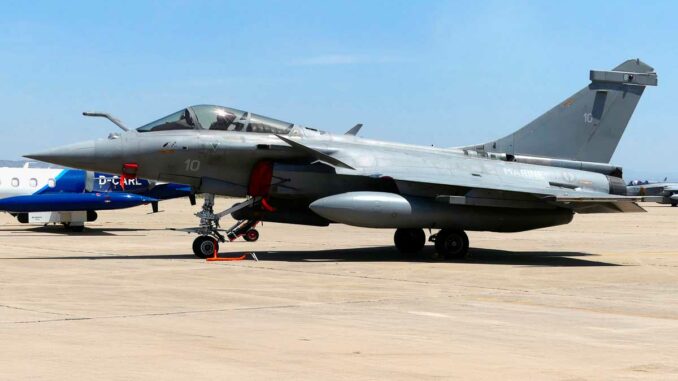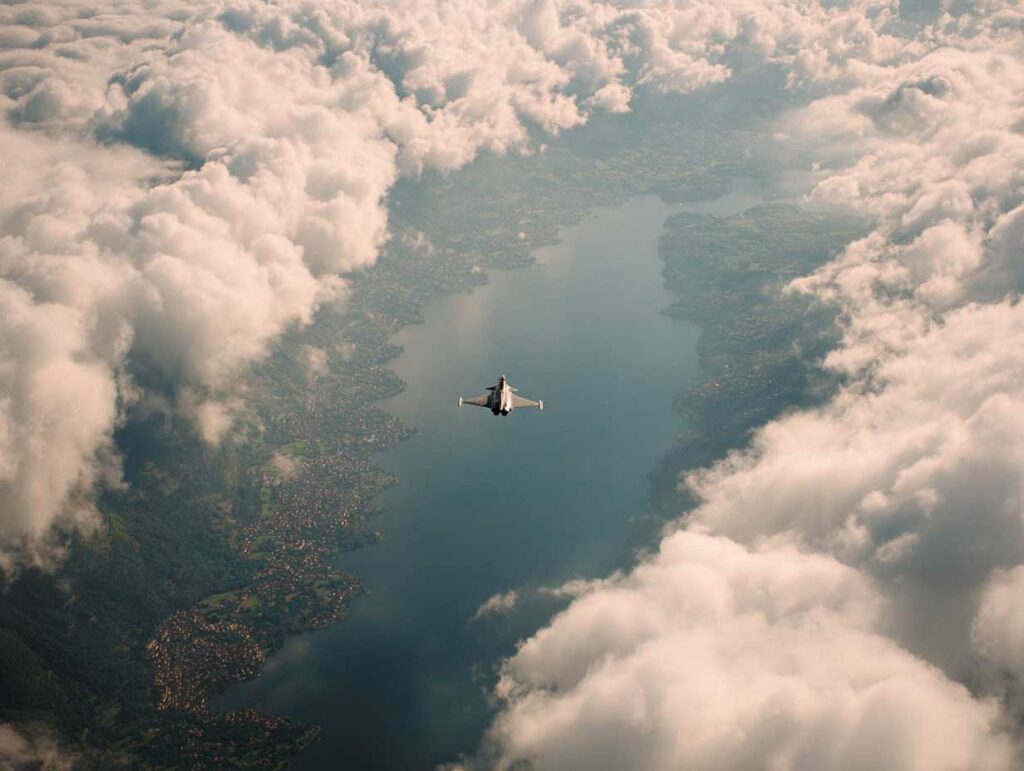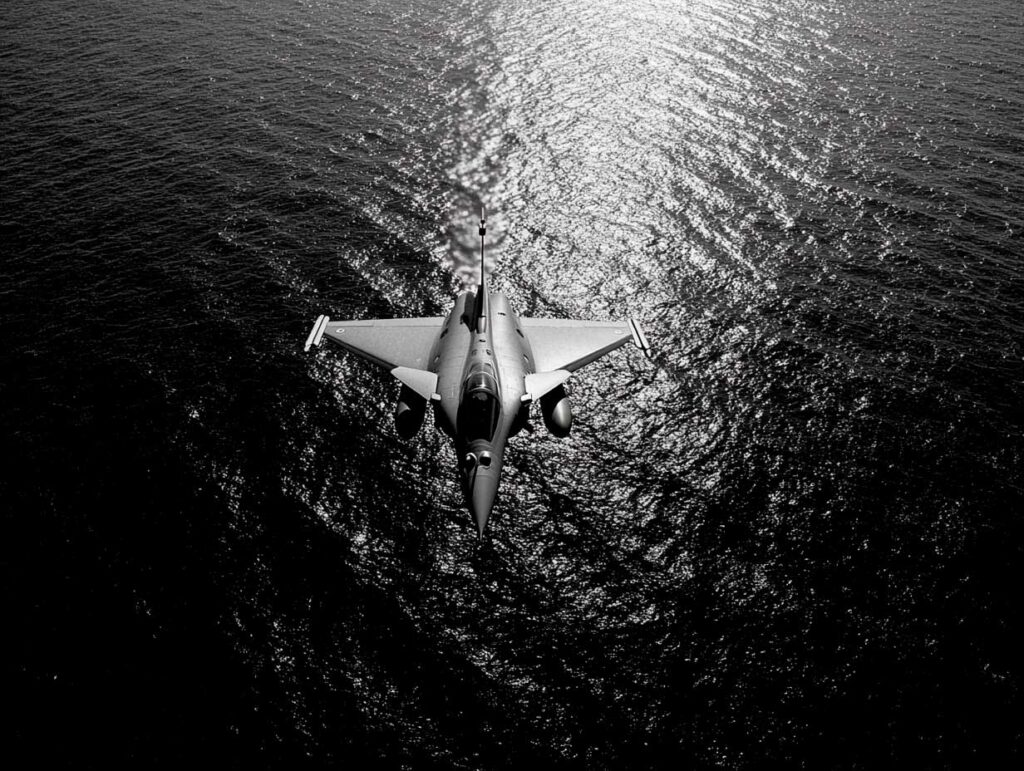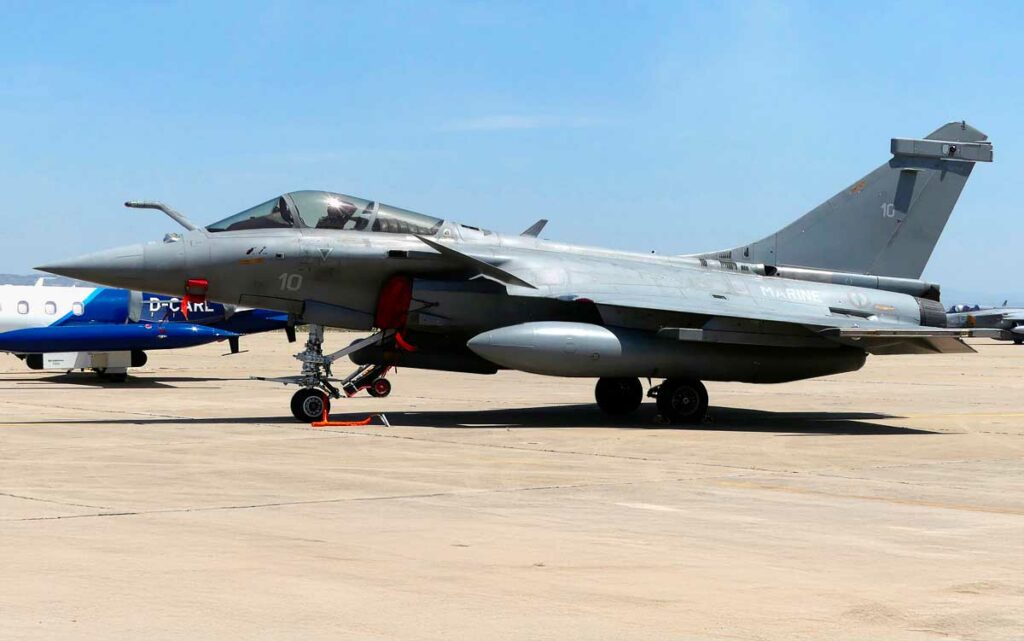
A clear breakdown of the Rafale F3-R, F4 and F5 standards: developments, sensors, weapons and schedule, with key figures and concrete examples.
The framework for continuous modernization
The Rafale is evolving through successive “standards”. Each standard includes software and hardware improvements: sensors, weapons, data links, electronic warfare, cockpit ergonomics, and maintenance. This approach ensures overall consistency and interoperability between versions, while keeping costs and schedules under control. It is based on formal milestones (qualification by the DGA), followed by a ramp-up in the armed forces (retrofitting of existing aircraft and new production).
In this context, F3-R marked the arrival of air-to-air and air-to-ground sensors and weapons. F4 ushers in the era of collaborative combat with enhanced connectivity, new interfaces (helmet-mounted displays) and preparation for new-generation munitions. F5 is set to extend the performance curve from 2030 onwards, with the integration of remote effectors (winged drones), disruptive weapons and increased engine thrust.

The F3-R standard: consolidated multi-role maturity
The F3-R was qualified on October 31, 2018. It reinforces the multi-role core with three cornerstones. First: the integration of the Meteor missile for BVR combat. Coupled with the RBE2 AESA radar, it enables very long-range engagements with high terminal energy thanks to the ramjet. Second: the TALIOS targeting pod, which stabilizes air-to-ground strikes day and night and provides accurate target identification (effective on moving targets with laser AASM). Third: a comprehensive upgrade of sensors/software and interoperability (data links, procedures).
In concrete terms, a Rafale F3-R can take off in a mixed configuration: 8 air-to-air missiles (MICA + Meteor), AASM of various calibers, SCALP for stand-off, AM39 Exocet for maritime missions, and AREOS for strategic reconnaissance. This versatility translates into operations with extended firing ranges, improved survivability, and controlled cognitive load thanks to data fusion. Feedback from overseas operations has confirmed the metric accuracy of the AASM, the reliability of the ISR chain and the ability to switch from an air-to-air mission to a support mission in a single flight.
The F3-R also serves as a retrofit platform: it has been delivered to new export users and is preparing the hardware/software transition to F4, particularly in terms of interfaces and electronic warfare. For both national and export fleets, it provides the foundation for high operational availability and controlled operating costs.
The F4 standard: the shift to collaborative combat
The F4 standard will be qualified in phase F4.1 on March 13, 2023. It will be deployed in increments (F4.1, F4.2, F4.3) to introduce connectivity, sensors and new-generation weapons while maintaining short delivery/retrofit cycles. The objective is to make the Rafale a tactical network node capable of communicating faster, further and more securely with aircraft, drones, ships and ground-to-air systems.
The F4.1: connectivity and interface at the service of maneuverability
The F4.1 provides SATCOM and CONTACT software radios, a communication server, and more advanced data fusion algorithms. On the sensor side: new very high-resolution SAR modes and GMTI for the RBE2 AESA radar, more powerful OSF-IT (IRST) for passive detection of low-signature targets, and SPECTRA improvements (detection/identification/countermeasures). Crew: Thales Scorpion helmet-mounted display and enlarged side screens, which speed up DAS (detection-acquisition-selection) and DLE (decision-launch-evaluation).
Tangible effect: an F4.1 patrol can share a composite track from multiple sources in real time, engage a Meteor with improved network-centric firing logic, and switch to a TALIOS-guided AASM 1,000 kg strike. On the ground, a Predictive Maintenance and Diagnostic Assistance System introduces predictive maintenance (Big Data/AI) to reduce downtime and smooth the supply chain.
The F4.2: hardware upgradeability for new aircraft
The F4.2 is mainly aimed at recently produced aircraft: wiring, interfaces, and electrical margins are designed for future loads (sensors, links, more power-hungry weapons), with upgrades to computers and the propulsion chain (engine ECU). New fleets benefit from greater growth potential without compromising weight or availability. Radar modes and the SPECTRA suite continue to mature, with expanded digital countermeasures.
F4.3: finalization before the F5 leap
F4.3, evaluated in 2025, serves as a stabilization step: validation of performance in connectivity, armament and electronic warfare in multi-domain scenarios. It prepares for the operational integration of MICA NG, advances SPECTRA (digital jamming, threat banks) and adds AI functions to TALIOS (automatic recognition/designation aid). The idea is to improve the reliability of the “pipes” and intra-patrol cooperation before the arrival of remote effectors and new F5-standard weapons. For sailors, full air-to-air carry and trap aids already proven on F4.1 reinforce the air defense of the carrier air wing.

The future F5 standard: the link with winged drones and disruptive weapons
The F5 is the capability leap planned from 2030. It is designed to operate in manned-unmanned teaming: the Rafale will pilot UCAS/“remote effectors” derived from nEUROn expertise, with human piloting in the loop, internal bays, and low observability. The aircraft will have to orchestrate sensors, jammers, decoys, outboard sensors, and swarm munitions.
In terms of armament, the F5 is preparing for the entry into service of the MICA NG (air-to-air), the FC/ASW – FMAN/FMC (replacement for SCALP/Exocet AM39, stealth subsonic and supersonic maneuvering profiles), and to the role of airborne platform with the ASN4G (hypersonic), set to succeed ASMPA-R around 2035. These weapons require increased electrical power, resilient high-speed data links, and enhanced computing capabilities.
On the propulsion side, Safran has unveiled the M88 T-REX: +20% thrust (approximately 9 tons PC), new blades and cooling systems, and an improved compressor, while maintaining dimensions and modularity to facilitate retrofitting. This gain is aimed at meeting the F5 requirements: more payload, less “network” drag (pods/antennas), and high energy profiles for heavy weapon launches. By the time it enters service, the F5 must remain operational beyond 2060 in cooperation with the SCAF/NGF program.
Future capabilities: sensors, links, weapons and MCO
Three families stand out. Sensors: the RBE2 AESA is gaining ultra-high-resolution SAR modes for very long-range imaging and GMTI for detecting/locking onto ground targets. The OSF-IT reinforces the IRST against low-signature targets. The SPECTRA suite is expanding its receivers and digital jammers to counter modern A2/AD (multi-band radars, IADS). Communications: CONTACT and SATCOM are structuring a low-latency tactical cloud with enhanced security. This backbone is the framework for collaborative combat (lead sharing, fire assignment, in-flight corrections). Weapons: MICA NG (IOC targeted for 2026), AASM 1,000 kg for terminal effect on hardened structures, Meteor optimized by network logic, and, in the future, FC/ASW (slot late 2020s/early 2030s) offering anti-ship/land depth duality and a SEAD/DEAD profile.
Finally, MCO is shifting towards anticipation: the Predictive Maintenance and Diagnostic Assistance System uses AI/Big Data to predict failures, plan downtime, reduce the logistical footprint and speed up return to service. With export fleets in F3-R/F4 and new orders for F4, the sector is securing an economy of scale that is favorable to flight hour costs and parts delivery times. For editors and analysts, this sensor-link-weapon pivot illustrates the added value of the Rafale in an environment where information and agility are as important as pure kinematics.

An industrial and export trajectory that sets the standard
The qualification schedule (F3-R 2018, F4.1 2023) can also be viewed through the prism of export contracts. The United Arab Emirates has purchased 80 Rafale F4s for delivery between 2027 and 2031: a volume that secures the ramp-up of subsystems (sensors, computers, screens, helmet-mounted displays). Indonesia has 42 Rafale aircraft on order, with a phasing plan that will accompany the F4 maturity. In the French armed forces, the fleet is moving towards a predominantly F4.1 fleet, while F4.3 is being evaluated, paving the way for F5 and its thrust, energy and bandwidth requirements.
This momentum is driving the ecosystem (Thales, MBDA, Safran, etc.). Examples with figures: F4.1 qualification on 13/03/2023; MICA NG live fire campaign on 19/06/2025; M88 T-REX announcement on 17/06/2025 (+20% thrust); RAU F4.3 in July-August 2025. These benchmarks help to date capabilities: MICA NG ramping up from 2026, FC/ASW at the end of the decade, ASN4G around 2035, F5 early 2030s. For newsrooms, these milestones provide structure for headlines and infographics; for decision-makers, they provide a framework for budgets and employment windows.
War Wings Daily is an independant magazine.